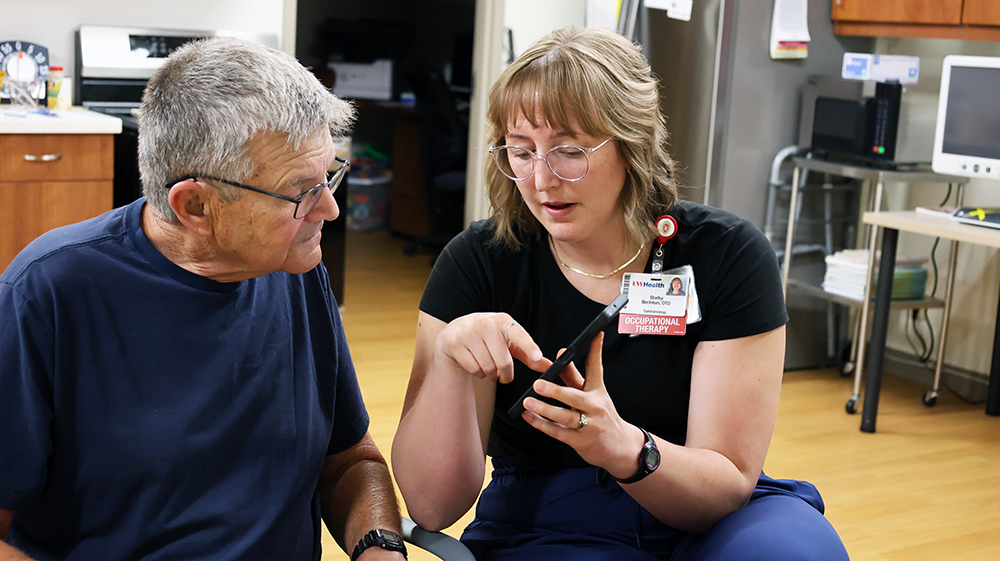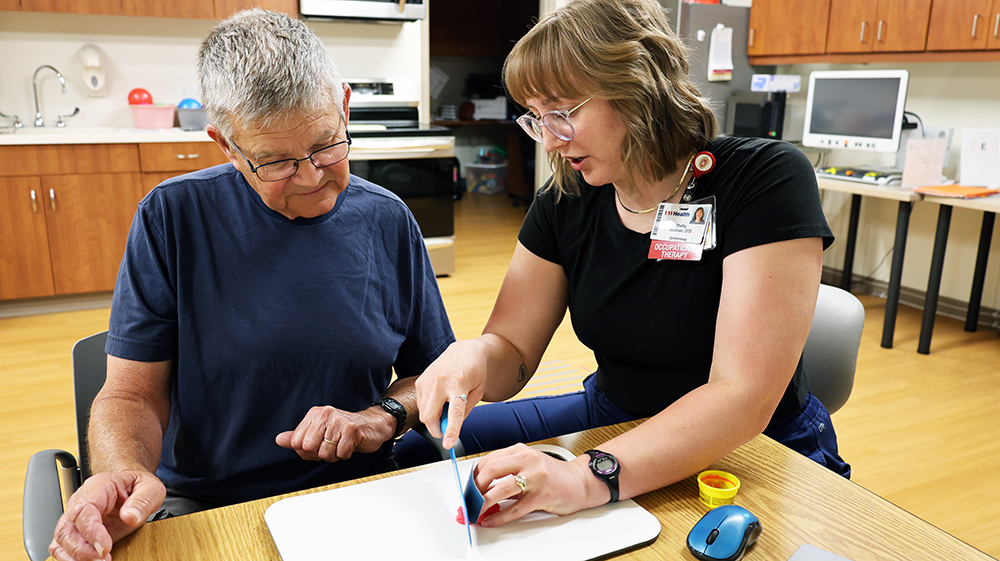
Imagine navigating your daily routine — cooking breakfast, reading a favorite book, or crossing a busy street — through a foggy lens. For millions of Americans living with low vision, this is a reality. Low vision is a significant loss of sight that can’t be fully corrected with glasses, contact lenses, or surgery. And for those affected, even the simplest tasks can feel overwhelming and isolating.
But it doesn’t have to be that way. Just ask Tim Hopping.
At 75, the Wisconsin resident has lived with glaucoma for over 20 years. Though blind in one eye, he managed well — until surgery on his remaining eye left him with blurred vision and new challenges.
“I stopped driving. I had to relearn how to do things safely,” Tim said.
That’s when Tim’s local ophthalmologist referred him to UW Health’s Vision Rehabilitation Services in Madison, WI — a program helping patients regain independence through personalized instruction using practical tools.
Led by Sanbrita Mondal, OD, the team includes occupational therapist Shelby Beckman, who began working with Tim in early 2025.
“Shelby has done so much for me,” Tim said. “She is a book of knowledge. There are so many resources out there that can help people with vision loss live well. And the more I learn, the better I do.”
“Vision is our most used sense, so any degree of vision loss can impact nearly every meaningful daily activity — reading, cooking, driving, socializing,” Beckman explains. “Low vision occupational therapy provides patient-centered care that treats the whole person in the context of their vision loss, which differs for everyone.“
Beckman works closely with patients to help them achieve their personal goals —whether that’s learning to use low vision aids, adopting adaptive changes to daily routines, or developing new strategies to remain independent. Therapy sessions are tailored to each person’s unique needs and may include training on how to compensate for reduced visual fields, depth perception, or contrast sensitivity.
“In occupational therapy, patients learn adaptive skills, how to use low vision tools, and compensatory strategies to maximize their proficiency and satisfaction with once routine activities in ways that they may not have thought of before their vision decline. I really enjoy problem solving with patients to find solutions for their meaningful leisure tasks, such as building model trains, crocheting, and reading to their children and grandchildren.“

The clinic features a fully equipped rehabilitation room, complete with a kitchenette, driver’s assessment station, and video magnifiers — providing a hands-on environment for patients to practice and grow. Every session is designed to help individuals build confidence and maintain control over their daily lives.
“The best part of my job,” Beckman said, “is seeing how my patients light up when they learn about tools and strategies that empower them to continue doing the activities and hobbies they love.”
In a few short months, Tim has already explored new ways to enjoy reading, discovered helpful apps for his phone and computer, and learned safe kitchen skills. But he’s not stopping there.
“I used to downhill ski,” Tim said, “And Shelby is helping me find a way to get back to it. I will have to adapt, but change is good. Just because I can’t do things the same way doesn’t mean I can’t do them at all.”